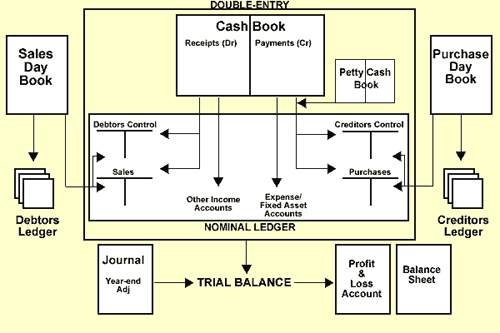Double-entry works from a basic accounting equation
assets = liabilities + capital
The double-entry method makes sure that your books are always in balance. Every transaction has two journals entries, a debit and a credit. Each transaction effects both sides of the equation.
You'll post your cash disbursements in a journal of entry. Each posting might refer to accompanying documents that you keep in a file somewhere. For example, postings about cash receipts might refer to invoices that you sent to a customers which prompted them to write checks to your business (checks which you posted cash receipts).
For example, postings about cash disbursements might refer to invoices that were sent to your business which prompted you to write checks (checks which you posted as cash disbursements.)
When you make a deposit to the bank, you'll file the bank's deposit receipt in a file.
 ශිල්ප 64
ශිල්ප 64